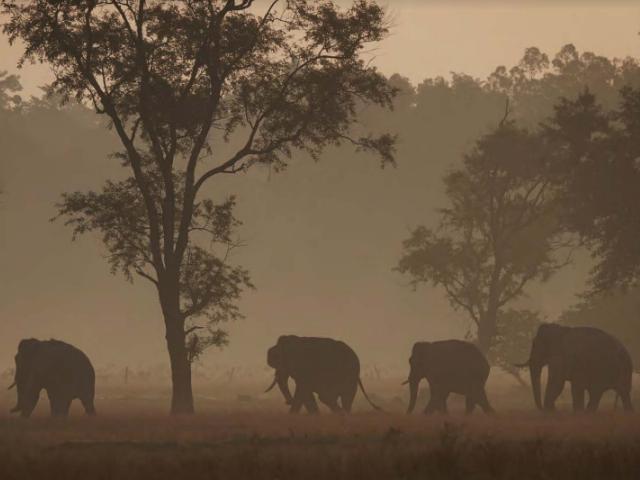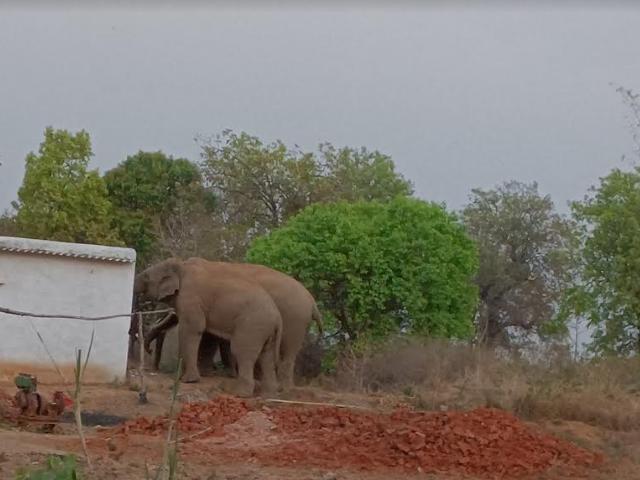Situation is grave, don’t complicate it further
Asian Elephant (Elephas maximus ) migrating from HACF take the route of Sarguja, Surajpur, Koriya to enter Anuppur and Shahdol of Madhya Pradesh. In mid March 2022, elephants migrating from this route of Chattisgarh trampled to death six tribals in Shahdol district of Madhya Pradesh. These villagers were visiting forest areas to pick mahua flowers which fall on the ground from Madhuca longifolia tree , an Indian tropical tree also known as Mahua and found largely in the central, southern, north Indian plains and forests, Nepal, Myanmar and Sri Lanka. The flower is also consumed by villagers for extracting country made liquor. Traversing the jungle corridor, the elephants have been migrating for long from Jharkhand to Madhya Pradesh via Chattisgarh.
Also read: The Great Elephant Migration: Can MP Chattisgarh join hands to Welcome the Jumbo ?
A conservative estimate of 40-50 elephants use different parts of Hasdeo Arand region with abnormally sharp levels of human-elephant conflict – itself a consequence of fragmentation of elephant habitat in other areas. Mitigation of any further disruption to elephant habitat would be “impossible”, said the WII report seemed to have been ignored and overlooked by the governments- both by Chattisgarh and the centre.Chhattisgarh human-elephant conflict situation is grave. The state has about 1 % or less than 300 elephants of India's wild elephant population but but high very high levels of human elephant conflict (HEC) over 60 human lives are lost every year due to conflict which is about 15 of the reported human deaths due to the conflict.
Also read: Rape of a Jungle :Palamu National Park
Less than a year ago on August 2 2021, Bhupendra Yadav, Union minister for environment, forest and climate change addressed the issue of HEC in the Parliament ( Rajya Sabha) . He said HEC caused 1,401 human and 301 elephant deaths in India from 2018-2020, Some 115 elephants and 457 people died in 2018-19, while 99 elephants and 585 people died in 2019-20. In 2020-21 (upto December 2020), 87 elephants and 359 people lost their lives in human-elephant conflict. The management of wildlife, including mitigation and management of HEC , is primarily the responsibility of state governments or the administration of Union territories. In Odisha, Jharkhand and other elephant-range states including Chattisgarh , the habitats of elephants are fragmented making these states more prone to man animal conflict. Opening of the Parsa coal block for mining would further complicate the situation in the conflict zone .
WII Warnings Ignored?
The civil society working in Chattisgarh called it “a shocking revelation” that the Chhattisgarh state government had “concealed and ignored an expert report on impacts of mining in Hasdeo Arand to forward its consent for opening up Parsa coal block.” This report was necessitated by a 2014 order of the National Green Tribunal that had set aside the Forest Clearance for Parsa East Kete Basen (PEKB) coal block pending a comprehensive study of the environmental and biodiversity conservation impacts of mining in HACF. Prepared by India’s foremost wildlife research institute, the Wildlife Institute of India, the 277-page report details the rich biodiversity and carefully analyses the disastrous impacts of further mining in the region. In one of its most significant findings, the report raised alarm saying, “Any further threat to elephants’ intact habitats in this landscape could potentially deflect human-elephant conflict into other newer areas in the state, where conflict mitigation would be impossible for the state to manage”.
Also read: Why MP is Denying 105- Yr Old Elephant a Guinness World Record
It recommended that except for the operational PEKB mine, the entire Hasdeo Arand area be declared as “no-go” and kept out of bounds from mining. It also mentioned that the existing conservation plan of PEKB coal blocks prepared by Adani are “basic and generic in nature” and would need to be substantially revised to mitigate the already devastating impacts that mining has had in the region. Adani Enterprises is the mine developer and operator (MDO). The civil society alleged that Chattisgarh chose to ignore its key recommendations and proceeded to give its go-ahead for a Stage-2 clearance for Parsa coal block with undue haste based on a “draft ICFRE report” disregarding the carefully documented irreparable environmental impacts as well as the on-ground resistance and opposition from gram sabhas.
Conflict To Eextend To MP
Elephants have been migrating from east to west. And this would have been minimized from Chattisgarh to MP after the setting up of Lemru elephant reserve (LER), proposed to be spread over Korba, Katghora, Dharamjigarh and Surguja forest divisions of Korba, Raigad and Surguja districts. This includes a vast expanse of HACF. But more mining in this pristine forest seemed to have stalled the LER project. Elephant sightings in the forest areas of Chattisgarh districts have become a sort of “pain and punishment for the forest staff”, said the department sources in Chattisgarh. The field staff many times ensures that the elephants migrate towards MP and this means “ peace for both, the animal and the forest department staff”. For this, forest department officials posted in MP districts bordering Chattisgarh claimed ,” elephants are driven deliberately to MP jungles”. The increasing human elephant conflicts in Chhattisgarh are leading to poisoning and electrocution cases. The same is feared in MP too.
Also read: Naxals Spread Terror in Kahna Tiger Reserve
So far, about 250 elephants have already crossed over Jharkhand jungles as they migrate from east to west . It is believed that the Chattisgarh elephants had died either of poisoning or electrocution following man- animal conflict in a large area as the giant animal moved from one place to another damaging property, crops and even killing villagers.Wildlife experts expected Madhya Pradesh and Chattisgarh to join hands and work together in the direction of conservation of this wildlife heritage species revered and respected in Indian mythology.
Images : Wildlife Institute of India





Comments
Post a Comment